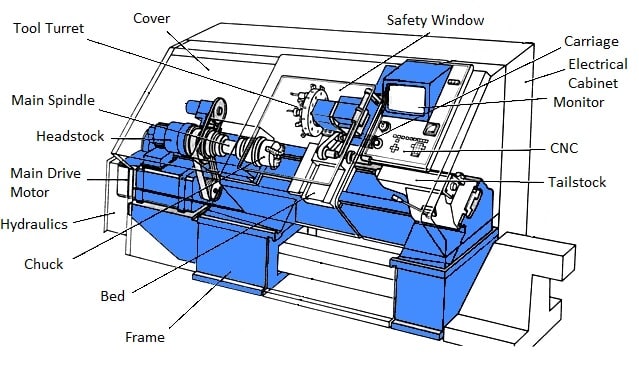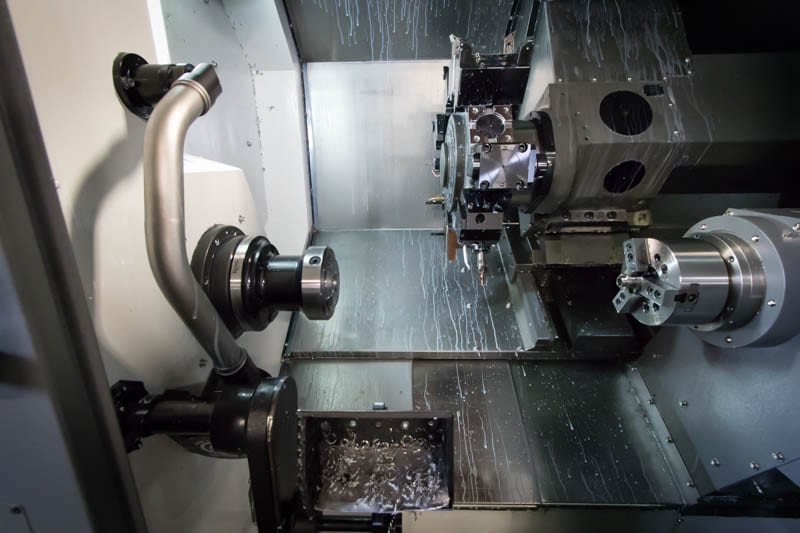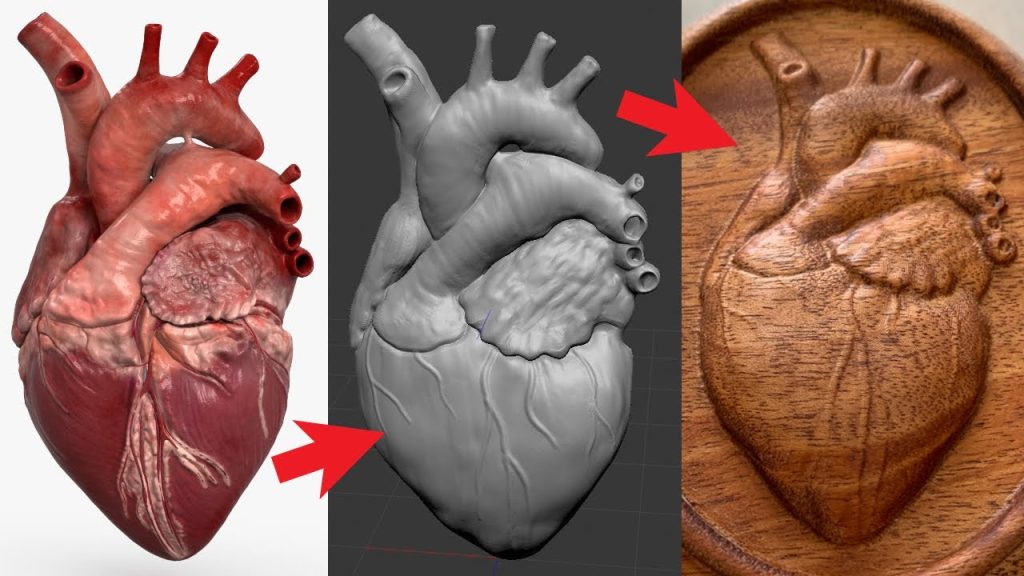Table of Contents
- How to Make CNC Turning Machine?
- Step 1: Designing the CNC Turning Machine
- Step 2: Sourcing the Components
- Step 3: Building the Machine Frame
- Step 4: Assembling the Components
- Step 5: Wiring the Machine
- Step 6: Testing and Calibration
- Step 7: Installing the Control System
- Step 8: Adding Safety Features
- Step 9: Training and Maintenance
- Step 10: Using the CNC Turning Machine
- Freequently Asked Questions
Are you interested in building your own CNC turning machine but don’t know where to start? Look no further! In this article, we will guide you through the process of building your own CNC turning machine from scratch.
CNC machines have revolutionized the manufacturing industry, allowing for precise and efficient production of complex parts. By following our step-by-step guide, you can build your own machine and take advantage of this technology in your own workshop. So, let’s get started!
- Choose the type of CNC machine you want to make.
- Design the machine using CAD software or hire a professional to do it for you.
- Acquire the necessary materials such as metal sheets, motors, and electronic components.
- Build the machine frame using the metal sheets and weld them together.
- Install the motors and electronic components according to the design.
- Program the machine using a CNC software to control the motors and automate the turning process.
- Test the machine to ensure it is working correctly and make any necessary adjustments.
How to Make CNC Turning Machine?
CNC turning machines are essential tools in the manufacturing industry. They are used to create precision parts, and they can be customized to meet specific requirements. If you are interested in making your CNC turning machine, there are a few things you need to know. In this article, we will discuss the steps involved in making a CNC turning machine.
Step 1: Designing the CNC Turning Machine
The first step in making a CNC turning machine is designing it. You need to decide on the size, shape, and specifications of the machine. The design should include all the necessary components, such as the spindle, chuck, tailstock, and tool turret. You can use CAD software to create a 3D model of the machine and test it for functionality.
Once you have the design, you need to create a bill of materials (BOM) that lists all the components required for the machine. This will help you to source the parts and estimate the cost of the project. You can also use the BOM to create a timeline for the project.
Step 2: Sourcing the Components
Once you have the BOM, you need to source the components for the machine. You can purchase the parts from a supplier or manufacturer, or you can make them yourself if you have the necessary skills and equipment. You need to ensure that all the components meet the specifications required for the machine.
Benefits:
- You can customize the components to meet your requirements.
- You can save money by making some of the parts yourself.
Vs:
| Purchasing Components | Making Components |
|---|---|
| Convenient and time-saving | Requires skills and equipment |
| May be more expensive | Can save money |
Step 3: Building the Machine Frame
The next step is to build the machine frame. The frame is the foundation of the machine, and it needs to be sturdy and durable. You can use steel or aluminum to make the frame, depending on the size and weight of the machine. You need to ensure that the frame is level and square to ensure accurate machining.
Benefits:
- The frame provides stability to the machine.
- You can customize the frame to meet your requirements.
Step 4: Assembling the Components
Once you have the frame, you can start assembling the components. You need to follow the instructions in the BOM to ensure that the components are assembled correctly. You may need to use special tools or equipment to assemble some of the components.
Benefits:
- You can customize the assembly process to meet your requirements.
- You can ensure that the components are assembled correctly.
Step 5: Wiring the Machine
After assembling the components, you need to wire the machine. You need to connect the motors, sensors, and other electrical components to the control system. You may need to use specialized wiring diagrams and tools to ensure that the wiring is done correctly.
Benefits:
- You can customize the wiring to meet your requirements.
- You can ensure that the wiring is done correctly.
Step 6: Testing and Calibration
Once the machine is wired, you need to test and calibrate it. You need to ensure that all the components are working correctly and that the machine is accurate. You may need to use specialized software to test and calibrate the machine.
Benefits:
- You can ensure that the machine is functioning correctly.
- You can make adjustments to improve the accuracy of the machine.
Step 7: Installing the Control System
After testing and calibration, you need to install the control system. The control system is the brain of the machine, and it needs to be programmed to control the movements of the machine. You may need to use specialized software to program the control system.
Benefits:
- You can customize the control system to meet your requirements.
- You can ensure that the control system is programmed correctly.
Step 8: Adding Safety Features
Once the control system is installed, you need to add safety features to the machine. You need to ensure that the machine is safe to operate and that it meets all the relevant safety standards. You may need to add safety guards or emergency stop buttons to the machine.
Benefits:
- You can ensure that the machine is safe to operate.
- You can meet all the relevant safety standards.
Step 9: Training and Maintenance
After completing the machine, you need to train the operators and maintenance staff. You need to ensure that they know how to operate and maintain the machine correctly. You may also need to create a maintenance schedule to ensure that the machine is kept in good condition.
Benefits:
- You can ensure that the machine is operated and maintained correctly.
- You can prolong the life of the machine by keeping it in good condition.
Step 10: Using the CNC Turning Machine
The final step is to use the CNC turning machine to create precision parts. You can use the machine to create parts for various industries, such as aerospace, automotive, and medical. You need to ensure that the machine is operated correctly and that the parts meet the required specifications.
Benefits:
- You can create precision parts to meet specific requirements.
- You can use the machine to create parts for various industries.
In conclusion, making a CNC turning machine requires careful planning, sourcing of components, building the machine frame, assembling the components, wiring the machine, testing and calibration, installing the control system, adding safety features, training and maintenance, and finally, using the machine. By following these steps, you can create a customized CNC turning machine that meets your specific requirements.
Freequently Asked Questions
In this section, we will answer some frequently asked questions about how to make a CNC turning machine.
What is a CNC Turning Machine?
A CNC turning machine is a type of machine tool used to create cylindrical components by removing material from a rotating workpiece. It is controlled by a computer and is capable of producing highly accurate and complex parts. The machine typically consists of a spindle, chuck, and tool turret, which can hold multiple cutting tools.
To make a CNC turning machine, you will need to have a good understanding of machining principles, as well as experience with computer programming and electronics. You will also need access to specialized machinery and tools, such as lathes and milling machines, as well as software for designing and programming your machine.
What are the Basic Components of a CNC Turning Machine?
The basic components of a CNC turning machine include a spindle, chuck, tool turret, and control system. The spindle holds the workpiece and rotates it at high speeds, while the chuck holds the workpiece in place. The tool turret holds multiple cutting tools and can be rotated to select the appropriate tool for the job. The control system consists of a computer and specialized software that allows the operator to program the machine to perform specific tasks.
Other components of a CNC turning machine may include coolant systems to lubricate and cool the cutting tools, as well as sensors and probes to monitor the machining process and ensure accuracy.
What are the Steps to Make a CNC Turning Machine?
The steps to make a CNC turning machine will vary depending on the specific design and requirements of the machine. However, some general steps may include:
1. Designing the machine using CAD software
2. Fabricating the machine components using specialized machinery and tools
3. Assembling the machine components
4. Installing the control system and programming the machine
5. Testing and adjusting the machine for optimal performance
It is important to note that making a CNC turning machine is a complex and time-consuming process that requires specialized knowledge and skills. It is recommended that you work with experienced professionals or seek out training and education before attempting to make your own machine.
What are the Benefits of a CNC Turning Machine?
There are several benefits to using a CNC turning machine, including:
1. Increased accuracy and precision
2. Faster production times and higher efficiency
3. Ability to produce complex parts with ease
4. Reduced labor costs and increased safety
5. Consistent quality and repeatability
Overall, a CNC turning machine can help businesses improve their manufacturing processes and stay competitive in today’s market.
In conclusion, we hope this guide has helped you understand the process of making a CNC turning machine. With the right tools and techniques, you can create a machine that is efficient, accurate and reliable. Remember to take your time, plan carefully, and seek advice from professionals if needed.
When building a CNC turning machine, it’s important to ensure that all the parts are properly aligned and calibrated. This will help you achieve the precision and accuracy you need for your projects. Additionally, make sure to use high-quality materials and components, as this will help extend the lifespan of your machine.
Finally, don’t forget to test your machine thoroughly before using it on important projects. This will help you identify any potential issues or areas that need improvement. With a well-made CNC turning machine, you’ll be able to take your machining skills to the next level and create amazing projects with ease.
Request a quote today!
[contact-form-7 id="1578" title="Contact form"]
Please compress the file into a ZIP or RAR file before uploading. Alternatively, send through your RFQ by email.
enquires@unitymanufacture.com





